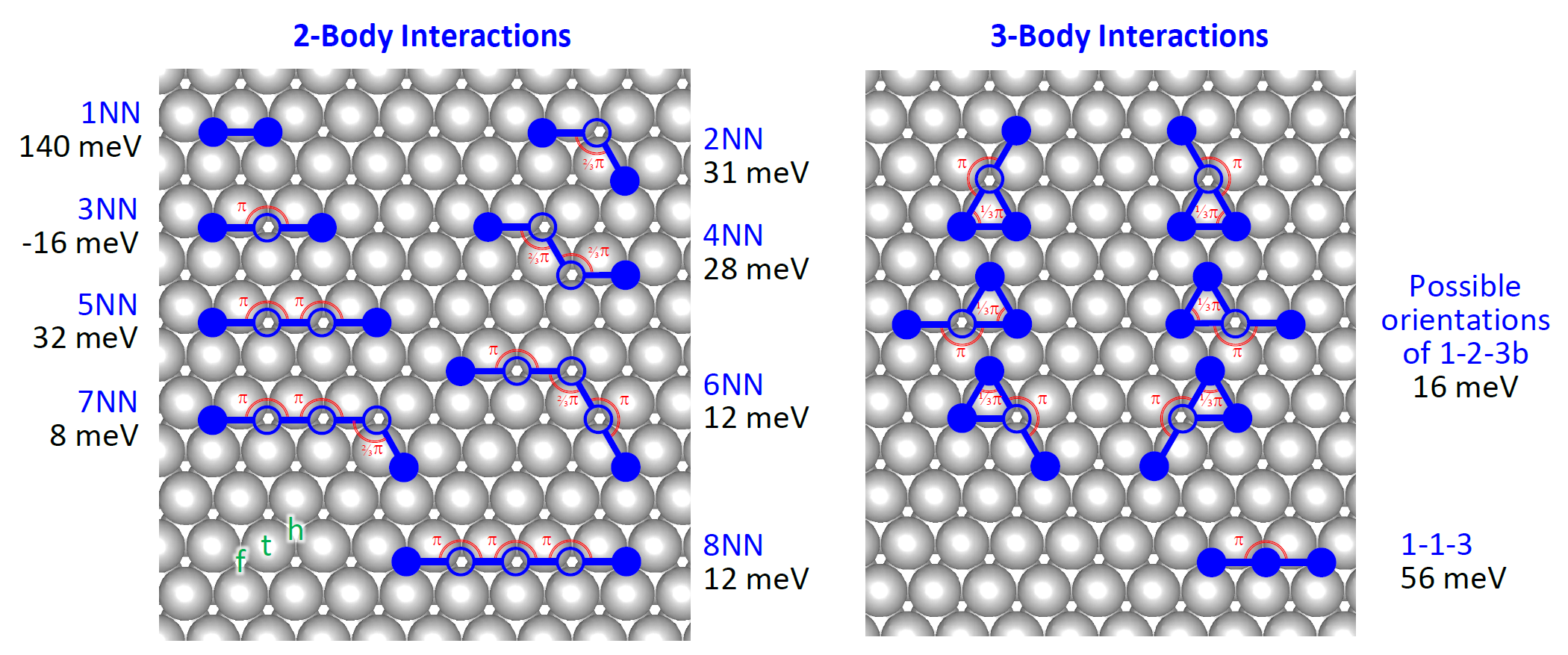Part 1: Energetic interaction patterns
The figure below shows the two- and three-body interaction patterns taken into account by the cluster expansion (CE) in discussion, overlaid on the Pt(111) surface. The different sites of this surface are marked on the bottom left of the first panel: top (t), fcc hollow (f) and hcp hollow (h). Oxygen binds to the fcc hollow sites, exhibiting a formation energy of -1368 meV, with respect to gas O2 at the zero-coverage limit. The two-body patterns (also referred to as "clusters" or "figures") are shown in the left panel below, and include up to 8th nearest-neighbour interactions. Filled circles correspond to sites occupied by oxygen adatoms, whereas open circles correspond to sites that may or may not be occupied, in other words, the state of these sites is unspecified. Moreover, note that we only display one orientation for each pattern; due to the symmetry of the lattice, there are six 1NN, 2NN, 3NN, 5NN, 6NN and 8NN orientations, and also twelve 4NN and 7NN orientations. Zacros's graph-theory-based pattern detection takes care of these possible multiple orientations, without the user having to define new patterns for the different orientations.
The energetic contributions of all patterns, also known as the effective cluster interaction (ECI) parameters, appear in units of meV. Zacros uses the lattice-gas convention for these values, as opposed to the Ising model convention used in the original paper by Schneider and co-workers.2 For the details on the mapping between the two conventions and how to make conversions please refer to the supplementary material of Ref. 3.
The three-body terms are shown on the right of the figure below. There are two such patterns: the 1-2-3b and the 1-1-3. For the 1-2-3b pattern we require that a top site is enclosed by the two neighbouring oxygens and the unspecified site, in accordance with the original paper by Schneider and co-workers.2 Rotating the 1-2-3b pattern by 60 degrees results in a 1-2-3a pattern, in which two neighbouring oxygens and the unspecified site enclose an hcp hollow site. Thus, there are only six acceptable orientations for the 1-2-3b pattern, the ones shown in the figure below.
In addition to the patterns shown below and the oxygen adatom binding energy, the cluster expansion will also include a "background" contribution to the total energy, equal to 12 meV per site (irrespective of its state, vacant or occupied). Such a background term may result from fitting the terms of the expansion to first-principles data the contributes a constant amount of energy for a lattice with fixed size. It is only included for cross-compatibility purposes, as it does not contribute towards energy differences which are of importance to the dynamics of the simulated system.



